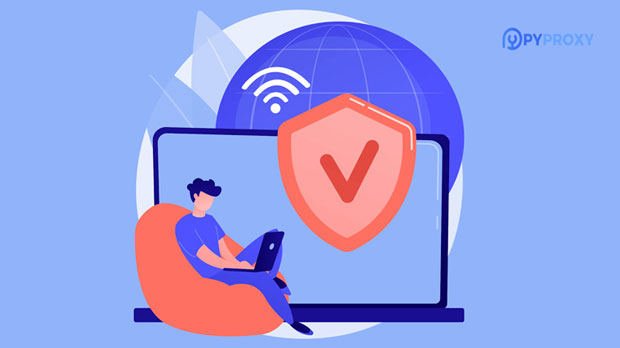How to solve the problem that the website still shows the old IP after changing the proxy IP?
When you change your proxy ip, but your website continues to show the old IP, it can be a frustrating issue. This problem can occur for various reasons related to caching, DNS propagation delays, or incorrect configuration. Understanding why this happens and how to resolve it is crucial for maintaining smooth online operations. In this article, we will explore the causes of this issue and provide detailed solutions, including checking DNS settings, clearing browser caches, verifying server settings, and more. These steps will help ensure that your website reflects the new IP after a proxy change, preventing any disruptions. 1. Understanding the Problem: Why Does the Website Display the Old IP?Before diving into the solutions, it's important to understand why this issue occurs in the first place. The process of switching to a new proxy IP is designed to hide or change the server's real IP address. However, if the website is still showing the old IP, this typically points to issues with DNS resolution or caching mechanisms. Several key factors might be responsible for this, including:- DNS Caching: Domain Name System (DNS) servers store the IP addresses of websites to speed up the browsing experience. If the DNS cache isn't cleared or updated after changing the proxy IP, the website will continue to display the old IP.- Browser Caching: Browsers also cache website data, including IP addresses, to speed up load times. If your browser's cache hasn’t been updated, it may still resolve the website using the old IP.- Incorrect Proxy Configuration: There may be instances where the proxy settings are not properly configured, which leads to inconsistencies in the IP addresses being displayed.2. Clear DNS CacheOne of the first things you should do when you notice that the old IP is being displayed is to clear your DNS cache. DNS cache is a local storage of domain names and IP addresses on your device or network. It allows your computer to quickly resolve website addresses without querying external DNS servers every time you visit a site. However, if the cache is outdated, it will continue to reference the old IP address even if the proxy IP has been changed.To resolve this issue, you can follow these steps:- On Windows: Open the Command Prompt and type `ipconfig /flushdns`, then hit Enter. This will clear the local DNS cache.- On macOS: Open the Terminal and type `sudo killall -HUP mDNSResponder`, followed by Enter. You may need to enter your password to proceed.- On Linux: Run the command `sudo systemd-resolve --flush-caches`.Once the DNS cache is cleared, your system will query external DNS servers again, potentially resolving the website with the new IP.3. Clear Browser CacheIn addition to DNS cache, the browser cache might also be holding onto the old IP address. Browsers like Chrome, Firefox, and Safari store web resources, including images, scripts, and even IP addresses, to reduce load times for future visits. If the cache isn't cleared, it may show outdated content, including the previous IP.To clear the browser cache, you can follow these steps:- Google Chrome: Open Chrome, go to Settings > Privacy and Security > Clear Browsing Data. Ensure "Cached images and files" is selected, and then click "Clear Data."- Mozilla Firefox: Open Firefox, go to Settings > Privacy & Security > Cookies and Site Data > Clear Data. Check the box for "Cached Web Content" and click "Clear."- Safari: Open Safari, go to Preferences > Advanced, and check "Show Develop menu in menu bar." Then, from the Develop menu, select "Empty Caches."After clearing the cache, refresh the page to see if the new IP is displayed.4. Check and Update DNS SettingsIf clearing the cache didn’t solve the issue, it may be necessary to review and update your DNS settings. DNS settings direct how domain names are resolved into IP addresses. After changing your proxy, the DNS settings might still be pointing to the old IP, causing your website to show the previous one.You should ensure that the DNS records for your domain are updated with the new proxy IP. This can involve:- A Records: Ensure that your domain’s A records point to the correct IP address. If they still reference the old IP, update them with the new one.- TTL (Time to Live): DNS records have a TTL value, which determines how long they are cached by external servers. If the TTL is too long, changes might take longer to propagate. Reducing the TTL value temporarily can speed up the propagation of the new IP.Once the DNS settings are updated, it may take some time for the changes to take effect due to DNS propagation.5. Verify Server ConfigurationAnother potential reason why your website still displays the old IP could be an issue with the server’s configuration. If you are using a proxy server, it's important to make sure that the proxy server is properly configured to forward requests from the new IP.Here are a few things to check:- Proxy Server Settings: Ensure the proxy server is configured to send traffic using the new IP. If the proxy is set to route through the old IP, the website will display that IP instead of the new one.- Firewall and Security Settings: Sometimes, security tools and firewalls might be blocking the new IP address or not recognizing it as valid. Ensure that the new IP is not being blocked by any security measures.- Load Balancers: If you are using load balancers to distribute traffic across multiple servers, make sure that the load balancer is properly configured to route traffic to the new proxy IP.6. Propagation TimeIn some cases, the issue could simply be due to DNS propagation delays. DNS changes can take time to propagate across the internet. The propagation process can take anywhere from a few minutes to 48 hours, depending on the TTL settings and the DNS servers involved. During this time, some users may still see the old IP address.While you cannot speed up the propagation process directly, you can monitor the status using online DNS lookup tools to see when the new IP starts to appear in the global DNS system.7. ConclusionSwitching your proxy IP is an effective way to maintain privacy and security, but it can lead to issues if the website continues to display the old IP. By understanding the root causes, such as DNS caching, browser caching, incorrect configurations, and propagation delays, you can take the necessary steps to resolve the issue. Clearing your DNS and browser caches, updating DNS settings, checking server configurations, and allowing time for DNS propagation are all essential steps to ensure the new proxy IP is reflected on your website.By following the solutions outlined in this article, you should be able to troubleshoot and resolve the issue of your website showing the old IP after switching to a new proxy.
2025-01-24

























































